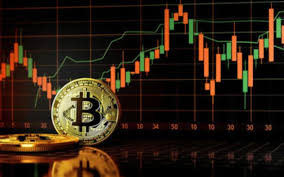
Mastering the Art of Crypto Trading High-Frequency
High-frequency trading (HFT) in the crypto markets is an emerging phenomenon that has captivated traders and investors alike. This article delves into the intricacies of Crypto Trading High-Frequency visit website high-frequency trading in cryptocurrency, examining its strategies, technology, advantages, and the risks involved.
What is High-Frequency Trading?
High-frequency trading refers to the use of sophisticated algorithms and technology to execute a large number of orders at extremely high speeds. In the context of cryptocurrency, it is primarily executed by institutions and individuals utilizing automated systems to capitalize on minute price changes across various crypto exchanges.
The Evolution of High-Frequency Trading in Crypto
The rise of cryptocurrency markets has changed the landscape of trading significantly. Initially dominated by traditional finance, HFT strategies have quickly adapted to the volatility and unique characteristics of crypto assets. The market’s 24/7 availability provides endless opportunities for high-frequency traders to engage instantly, executing trades whenever optimal conditions arise.
Key Strategies in High-Frequency Trading
1. Market Making
Market making involves posting buy and sell orders simultaneously to profit from the spread. High-frequency traders continuously adjust their orders to capitalize on fluctuations in prices, adding liquidity to the market.
2. Arbitrage
Arbitrage is the practice of taking advantage of price discrepancies across different exchanges. High-frequency traders can quickly buy an asset on one exchange where it’s cheaper and simultaneously sell it on another where the price is higher, profiting from the difference.
3. Statistical Arbitrage
This strategy utilizes statistical models and algorithms to predict price movements based on historical data. HFT traders can identify patterns and correlations in the crypto market that, when leveraged correctly, can yield substantial profits.
4. Trend Following
Trend following involves using algorithms to detect and follow price trends. High-frequency traders often employ technical analysis indicators that signal entry and exit points, executing trades quickly to avoid the risk of slippage in volatile markets.
Technology Behind High-Frequency Trading

The backbone of successful high-frequency trading lies in technology. Traders leverage powerful computing systems that execute trades at millisecond speeds. Key components include:
1. Algorithms
These codes serve as the brain behind HFT, making trades autonomously based on pre-defined criteria and analysis of market data. Algorithms must be refined continuously to adapt to changing market conditions.
2. Co-location Services
Co-location refers to placing traders’ servers in close proximity to exchange servers. This minimalizes latency, allowing for quicker execution of trades and giving high-frequency traders a competitive edge over others.
3. Market Data Feeds
Real-time market data feeds provide essential information on pricing, order books, and trades. HFT depends on high-quality data to make informed decisions within a fraction of a second.
Advantages of High-Frequency Trading
High-frequency trading offers several advantages:
1. Increased Liquidity
HFT helps enhance market liquidity by ensuring that there are always buyers and sellers available, facilitating smoother transactions.
2. Price Discovery

HFT plays a crucial role in price discovery, as high-frequency traders adjust prices based on real-time market data, leading to more efficient markets.
3. Profit Margins
By capitalizing on slight price movements and executing a vast array of trades, HFT can lead to substantial profit margins, even if individual trades yield small returns.
Challenges and Risks in High-Frequency Trading
Despite its advantages, high-frequency trading is not without challenges and risks:
1. Technological Failures
Reliance on technology means that any system failures, bugs, or connectivity issues can lead to significant financial losses.
2. Market Volatility
Crypto markets are known for their extreme volatility. High-frequency traders can face unexpected losses if sudden price swings occur without sufficient warning.
3. Regulatory Scrutiny
As high-frequency trading gains more attention, regulatory bodies are beginning to impose stricter regulations, which could impact trading strategies and profitability.
Conclusion
High-frequency trading in the crypto space has uniquely transformed financial trading. While it promises excellent opportunities for profit, it also comes with significant risk and technological challenges. Successful high-frequency traders continuously adapt their strategies and systems to navigate the ever-evolving landscape of cryptocurrency. As new technologies and methodologies emerge, the future of high-frequency trading holds exciting potential for those willing to delve into its complexities.
Resources for Further Learning
For those interested in learning more about high-frequency trading in cryptocurrencies, consider the following resources:
- Investopedia – High-Frequency Trading
- Forbes – High-Frequency Trading in Crypto
- ResearchGate – High-Frequency Trading Overview


